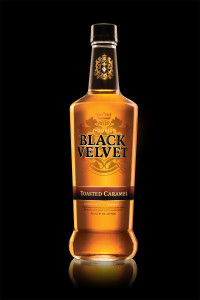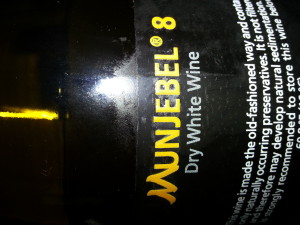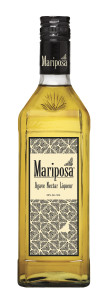Lately my emails have been disappearing into the ozone, so I don’t know how I ended up with this bottle of Pink Gin. It hasn’t been here for that long, maybe a few weeks. Pink Gin – must have read about it in some old book, never knew what it was. Always wondered what it was, and expected it to be awful. Apparently, it’s gin with bitters. And some pink coloring.
This one is made by The Bitter Truth, so it’s probably much better than the stuff I read about. It has flavors and aromas of broiled cherry with a bi of toasted almond and orange peel providing a pleasant complexity without any bite. A quiet-feeling spirit with a moderate finish.
Nicely done, Bitter Truth.
Blog
Black Velvet Toasted Caramel

Well, the aroma on this whiskey is so sweet and buttery, and the flavor was so purely toffee-caramel, that I had to look at the bottle to see if it really was whiskey. It was: 70 proof.
“This is going to disappear over Thanksgiving weekend,†was my first thought after tasting it. I could imagine at the end of the evening, when everyone was craving a very small treat, there would be small pours…and then more small pours. Over ice, or not. And the richness of the flavors would stand up to any hearty dishes we had just finished.
Sure enough, that’s what happened.
Frank Cornelissen’s Charming, Elusive Mt. Etna Wines
After receiving an urgent email that a legendary Sicilian winemaker was going to be a nearby wine shop that afternoon, I hastily re-arranged my schedule. I was going to see the famously controversial “natural wine maker†Frank Cornelissen, from Mount Etna in Sicily. I was going to taste his naturally-made wines, from an area where cool nights and warm days enhance aromatics and flavors in grapes nurtured on volcanic soil at various altitudes.
I arrived at the Wine Bottega in Boston’s North End shortly after Cornelissen, and immediately went down into the cave-like tasting cellar to meet him. Expecting a taciturn reception, I was unprepared for Cornelisson’s warm welcome. Rather than appearing hermetic and curmudgeonly (as I had expected, from reading about his devotion to his craft), he’s thin, tall, attractive, personable and speaks several languages fluently.
Even in the dim light, I could see that the first wine he handed me was orange. The MunJebel white wine, 2011 vintage. Bringing it to my nose, I inhaled florals and fruits, and a bit of earthy garden or seashore too. What you smell is what you get: the flavors duplicated the aromas, and even the finish. This is a blend of mainly indigenous white grapes that changes slightly depending on the year; this year he used less coda di volpe.
Having been a bit apprehensive about what I would encounter, I was delighted to find I liked the winemaker, and even more pleased that I enjoyed his wines. I also tasted two 2011 reds, the MunJebel and the Contadino. All three were so aromatic, layered, and fascinating on the nose and the palate that I lingered for some time in this dim, enchanting cave, sipping my tiny samples very slowly and listening to Cornelissen being charming to everyone who entered.
I bought a bottle of the MunJebel white from a display on the stairway landing and it was already somewhat chilled. I put it in my cold car, and an hour later I popped it into my fridge and waited for it to cool down a little more.
Then I opened the wine and poured. In my bright kitchen, I could see how truly orange-hued it was. I poured and sipped: it was fizzy, yeasty and not at all charming. I put it back in the fridge and waited for it to settle down and blossom, but it never did though I sampled it several more times during the evening.
Finally I called the Wine Bottega and they suggested shaking up the wine a few times, to get the bubbles out. That part worked; the wine became still. But it still wasn’t charming. It was yeasty, and tasted more like something that had yet to turn into wine, or perhaps beer. In any case, it wasn’t good. I left it overnight. At noon the next day, it had definitely not turned into anything charming.
What was it about that tasting at Wine Bottega? Is it some sort of magical place where everything  tastes good?
tastes good?
Not only that, but all the notes I took in my little spiral notebook have completely disappeared. I’m going back — with my bottle — to see if that little tasting room is still there…
Surprises — good — with Pays d’Oc wines at lunch
I was kind of surprised at a luncheon last week to find that a former table-wine area of France has really grown up nicely. Several of the Pays d’Oc IGP wines I sampled were much finer than I had anticipated. This region (mainly in the Languedoc-Roussillon area) is also marketing their wines at a somewhat higher level, too: as more of the Pays d’Oc wines reach the US, they are targeting $10-$14 for many of their “entry level†wines, with some going a few dollars higher. Here are three of the wines that impressed me during our very French meal at Capsouto Freres in New York.
2010 La Forge Estate Sauvignon Blanc. One of the most successful wine and food pairings at this lunch: perfect with the Spinach Souffle. In fact, the pairing made both the food and the wine better. It’s a fairly low alcohol wine by current standards, at 12.5%. Floral and herbal aromas moved into the flavors, which had some sweetness. The palate and body showed more roundness than expected due to a touch of neutral oak. A light but longish finish had a persistent citric note.
2010 Domaine de Larzac Roussanne Chardonnay, surprised me by coming down on the flinty side of chardonnay – more austere than I had expected. Still, there was also some roundness, and the two grapes’ flavors were nicely integrated, and with balanced acidity.
2010 Domaine Gayda “Figure Libre†Cabernet Franc. Paired well with lamb and duck. Aromas of big, dark cherry made you want to put the wine in your mouth right away. A good idea, because the flavors did not turn out to be overly fruity, as might be expected. Structure and tannins were balanced, and there was a nice bite of acidity, too.
Benefit from DaleDeGroff’s show: mixology with song, story and DRINKS!
Anyone who enjoys cocktails, mixology or great bars should be required to go to Dale’s show. It’s all the Ameican (spirits) history you need to know, without the books — and with the personal stories.
Benefiting the Museum of the American Cocktail in New Orleans. 
Agave Liqueur: If you didn’t know, you’d think Mariposa was made from honey

Chilling the liqueur — or slipping in some ice — adds depth with dark honey notes and a hint of dried orange peel in the flavors.
You could sip this liqueur by itself over ice, or make a simple drink like my Desert Eve Cocktail:
• 1 Tablespoon Mariposa Agave Nectar Liqueur
• 1 shot Kirkland Signature Vodka
• 3 ounces Schweppes Tonic (diet or regular)
Stir and pour over crushed ice into a highball glass